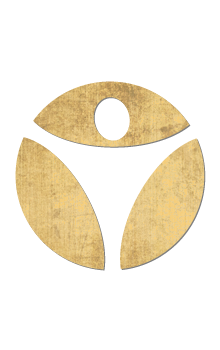The Science of Rest Day Recovery
- Updated on: March 29, 2022

Have you ever heard the expression, “less is more?”
Sometimes this can be true, even in your yoga and fitness routine!
It can sound a bit counterintuitive to think that taking time OFF from your workout regimen for rest day recovery could actually be the key to:
- Improved stamina
- Better muscle tone and repair
- Enhanced flexibility
- Expedited weight loss
It’s true!
But just sitting on the couch isn’t going to cut it.
What you need is a strategic rest day plan that will actually help you recover so that you can come back to your exercise routine with more energy, power, and consistency.
In this blog post, we’ll explore what exactly a rest day is, if rest days are suitable for you, why rest days are essential, and how often you should take them.
Plus, we’ll break down the difference between active and passive rest day recovery and explore how yoga can be an impactful way to actively recover on your rest days.
What is a rest day?

A rest day is a day that a person takes off from their regular exercise routine. Rest days could be a day with minimal physical exercise, or you may choose to take an active recovery day where you reduce your energy exertion. However, you’re still moving your body in a supportive, intentional way.
Active vs. Passive Rest Day Recovery
There are different philosophies about what a rest day can and should look include.
Before we explore the difference between active and passive recovery on your rest day, keep this in mind:
YOU know your body better than anyone else. Learn to trust what your body needs to make the best intuitive decisions for yourself.
What is Passive Recovery?

Some believe that rest days should be workout-free. The body is completely at rest. This kind of rest day is considered “passive recovery.” Passive recovery might look like this:
- Reading
- Relaxing in a sauna
- Volunteering
- Spending time with family and friends
- Watching tv
We believe that rest day recovery CAN include these things but should also have some active recovery.
What is Active Recovery?

Active recovery means resting your muscles while still moving your body and maintaining fitness. Active recovery tends to be the best way to use a rest day because it gets the heart pumping, promoting cardiovascular activity and circulation.
These days involve low exertion so your body can properly heal and repair before your next workout. Some great ways to practice active recovery include:
- Gentle, restorative, or yin yoga
- Walking
- Cooling down after an intense workout (i.e., walking for 10 minutes after a run)
- Swimming
So you might wonder, “Should my rest day be zero activity, or should I add in some active recovery?”
Typically, it is best to do active recovery exercises on your rest day. Rest days aren’t usually intended for lounging around on the couch.
However, passive rest days DO have a place. If you feel exhausted or burnt out (mentally or physically), you may take a day without activity to rest.
Who should take rest days?

Rest days are suitable for anyone and everyone. Whether you are introducing a yoga or fitness routine or consider yourself a seasoned athlete, you can benefit from taking time to recover between your workouts.
Why are rest days important?

Rest days are crucial for so many reasons. Most notably, they allow you to tend to both your mind and body. Here we’ll explore some of the most significant benefits of taking regular rest days.
Recover & Repair
First and foremost, rest days allow your body, muscles, and tissues to repair. No matter your fitness level or the type of exercise you prefer, your body needs to heal.
Injury Prevention
Rest day recovery will help you prevent injury so you can continue participating in your favorite physical activities like running, weightlifting, yoga, dance, swimming, golf, and more! Suppose we push our bodies too fast too soon. In that case, we could potentially injure ourselves and setback our physical and athletic goals significantly.
Replenish The Body
Your body stores glycogen in the muscles. Glycogen is a source of energy, and exercise naturally depletes these glycogen levels, leading to muscle fatigue.
Lose Weight & Build Muscle
As you move through your workout routine and become more consistent in your physical activity, you may eventually reach a plateau point. Weight loss might inexplicably stagnate, or you may struggle to build more muscle. This experience can be defeating and frustrating. Exercise causes a slight stress response in the body. If you’re constantly working out without taking a break, you could be sabotaging your fitness goals! Plus, taking rest days will increase the likelihood that you stick to your workout routine long-term and don’t give up!
Reduce Mental Exhaustion
Physical activity is also a strain on the mind. Taking a rest day can help you develop a healthy relationship with fitness while also tending to your emotional health.
Signs You Might Need a Rest Day

Here are some telltale signs that a rest day could be a positive addition to your lifestyle:
- You regularly experience muscle soreness and pain.
- You burn out quickly and can’t finish workout routines.
- Mood shifts like insomnia or irritability.
- Plateaued weight loss or muscle gain.
How Often Should I Take a Rest Day?

Every person’s body is different, but typically rest days are taken every 7-10 days. Start with this range, and you can explore what works and feels best for your body and your performance.
You may increase or decrease your rest day frequency depending on:
- Your goals such as weight loss and performance.
- Level of fitness or exertion or type of activity. You may take more rest days as your muscles get used to the new exertion levels or types of exercises early on. As you become more fit, your muscles may not need to repair as frequently, and you can take fewer rest days.
Planned Rest Days vs. Unplanned Rest Days
You know that you need to stick to a consistent routine to reach your fitness goals. You might worry, “what if I take too many rest days?”
It’s true; you don’t want to get off track with your workouts. It can be tricky to decide if you need a rest day recovery outside of your planned rest days or if you’re looking for excuses.
We totally get it!
Motivation is tricky, and losing momentum can divert even the best-laid plans!
Here are some “excuses” that may not warrant an unplanned rest day:
- I don’t have my workout gear or clothes. Pack ahead of time, or choose to do a different kind of workout once you get home so you can stay on track!
- I feel “tired.” Surprisingly, working out may help you feel MORE energized!
- I didn’t get up in time. Make your workouts a priority and set yourself up for success by getting a good night’s sleep.
Here are some valid reasons to take an unplanned rest day:
- You’re sick. Don’t overdo it. If you push through while you’re sick, you may prolong your symptoms or worsen them.
- You have an injury. It should go without saying if you’re injured, you need rest. Suppose you feel the need to keep exercising. You may choose to work out a different muscle group. For example, if you pulled a hamstring, you could focus on upper-body work that doesn’t strain the injury more.
- You’re feeling drained. Some days you need to learn to listen to your body. Working out might be the worst thing to do if you’re feeling mentally or physically exhausted! When your mind is tired, you’re more likely to injure yourself. If you aren’t moving mindfully, you could sacrifice alignment and safety in postures or exercises, causing more harm than good.
What To Do On a Rest Day

Aside from taking a break from your regular workout routine, you can do a few other things to enhance your rest days and get the most out of this break.
- Be sure to hydrate! Drinking water can help reduce muscle cramping and ensure nutrients support your body as it heals.
- Eat healthy carbs to restore your glycogen levels. Getting your carbohydrate intake from fruits and veggies will also help your recovery!
Yoga for Active Recovery

Yoga is one of the best options for active recovery on your rest days. Yoga is low-impact, requires only your body weight, and offers a variety of styles to fit your needs. You’ll benefit both physically AND mentally to help you avoid burnout on multiple levels.
When you practice yoga on a rest day, you can increase flexibility, enhance breathing, promote circulation, and feel more connected to your body and mind.
Create Your Active Recovery Rest Day Plan
We hope that this blog encourages you to weave rest day recovery into your fitness routine. We’ve got you covered if you’re looking for guidance or some actionable ways to get started through an active recovery yoga practice!

Yoga Fix is an excellent complement to any rest day regimen. This class series will help you address everyday aches and pains. Fix your posture, get rid of pain and discomfort, increase your energy, and build a basic fitness level in less than 20 minutes per day.

Yoga Release is an fantastic option for injury prevention and healing. You’ve likely seen these exercises in medical offices, in the gym, and on the field with athletes – and now it’s your turn to see how quickly you can recover between workouts. Undo the effects of sitting all day and discover how limber you can feel with a few select exercises. Plus, prevent and rehabilitate injuries with self-myofascial techniques and foam rolling.
We hope to see you on your mat for your next rest day!
Recent Posts
Categories
Related Articles
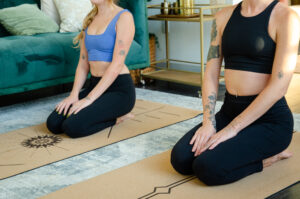
Breathing technique to improve your yoga practice
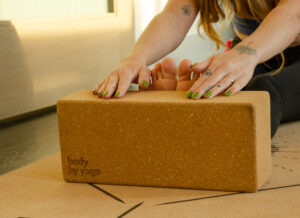
Benefits of yoga before bed
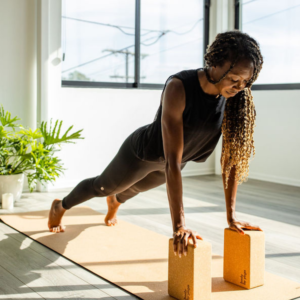
Taking the next step to more challenging yoga
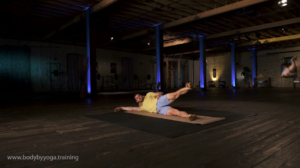
Stretching and Strengthening your hips
Related Articles
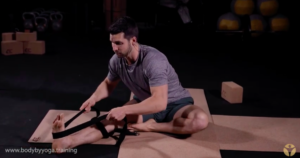
Good Stretch For Lower Back And Hamstrings
This stretch can be done before or after a workout. It’s simple, but very effective. Stretching your legs can help alleviate back pain as well.

Taking the next step to more challenging yoga
Yoga is for anyone at any level. We want everyone to feel challenged in their practice so we’ve created all-inclusive classes that will help improve

Mini sequence for beginners
We created this video for a quick sequence to stretch and build strength in your hips and shoulders. We start the video touching on
